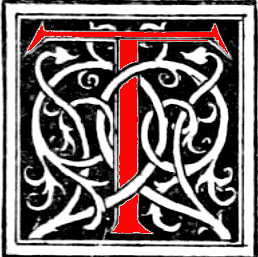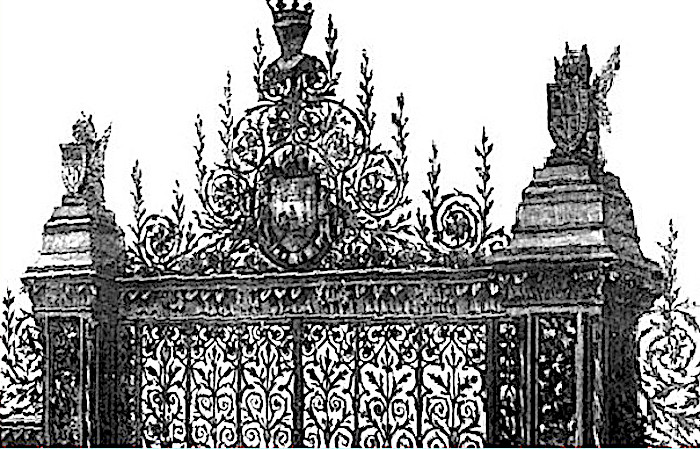
The Norwich Gates, Sandringham, Norfolk, by Barnard, Bishop & Barnard of Norwich. 1862. Cast and wrought iron. Source: Illustrated London News, 28 June 1862, p. 670.
Review in the Illustrated London News account of the International Exhibition of 1862

his work is one of the attractive objects of the nave of the International Exhibition, and occurs upon the south side of the British or eastern portion; as an example of manufacturing skill it is of a most interesting character, and has been designed with the view of combining cast and wrought iron.
The work consists of four massive piers, a pair of central and two side gates; the external piers and the side gates being lower than those which enjoy more central positions, and the piers are connected by girders or horizontal members of a somewhat massive character. The large portion of these gates are in cast iron. and the smaller parts are wrought, the cast members being enriched with ornament, which is judiciously in low relief, while the enrichment wrought by forging is of a different class. It is always pleasing to see the mode of production manifested by a work: this is equivalent to frankness of character, which is always favourably regarded.
The general setting out of the work is for the most part good, yet in one case the proportion is faulty, the side gates being divided into upper and lower portions about equal in size. In order to beaut[if?]y it is necessary that the parts of a composition bear an odd relation to one another. Thus the proportion of 2 to 2 is invariably bad; of 2 to 3 better; of 3 to 5 better still; and the beauty of the proportion will be found to increase with its subtlety and the difficulty of detecting its character.

The lower portions of the gates are divided into square passages, each of which is filled with a quatrefoil which is very pleading; over this a vast quantity of foliage is applied, which is profuse and lavish, and is not sufficiently modified to suit its position. The foliacious filling of the entire work consists chiefly of the vine, hawthorn, oak, ivy, rose, convolvulus, bryony, and periwinkle; the foliage, in the case of the vine sprays and the holly branches, frequently growing in contrary directions from both ends of the branch. The gates are chiefly enriched with the vine, hawthorn, oak, and rose, which are individually formed into ornamental members, some of which are very successful, and consist of parts simply repeated in a manner perfectly consistent with the laws of ornament.
The two central or chief piers are 18ft. high, and their pedestals are 3ft. square, the shaft being in proportion; while above they are crowned by capitals enriched with wrought-iron foliage, The shafts of the piers are panelled, and are filled in with leafage and flowers — the convolvulus, periwinkle, and ivy, intermingled with oak-branches; and the external piers, while reduced in height, are of the same character.

Over the central piers is a terminal enrichment, formed of the oak and holly, surrounding a shield bearing the arms of Norwich; and over each of the side gates is a similar arrangement of hawthorn-branches, which lean towards the central mass of the gates, and are of a light, bracket-like character. Each pier is also surmounted by a griffin supporting a shield. In view of their workmanship these gates are worthy of the highest commendation; but in design the parts are rather small and apt to entangle the garments of the passer-by, and the error of causing foliage to grow in contrary directions from the opposite end of the branch prevails throughout. [664]
Link to Related Material
Image scan, transcription and formatting by Jacqueline Banerjee. You may use the images without prior permission for any scholarly or educational purpose as long as you (1) credit the person who scanned them and the Internet Archive, and (2) link your document to this URL in a web document or cite the Victorian Web in a print one. Click on the images to enlarge them.
Bibliography
"The Norwich Gates." In "The International Exhibition." Illustrated London News. Vol. 40. 28 June 1862. Internet Archive. Digitized by the Khale/Austin Foundation. Web. 18 December 2021.
Created 28 October 2021Last modified 28 June 2024